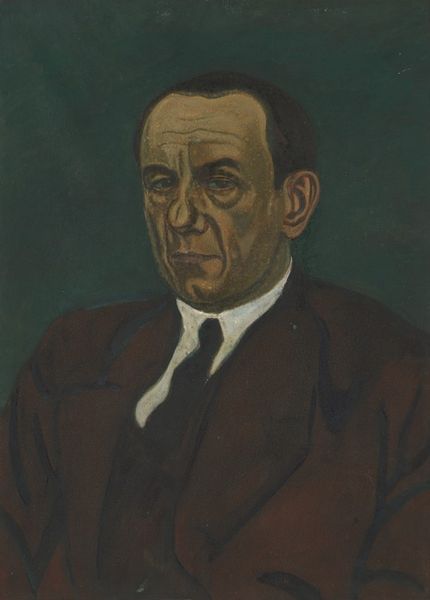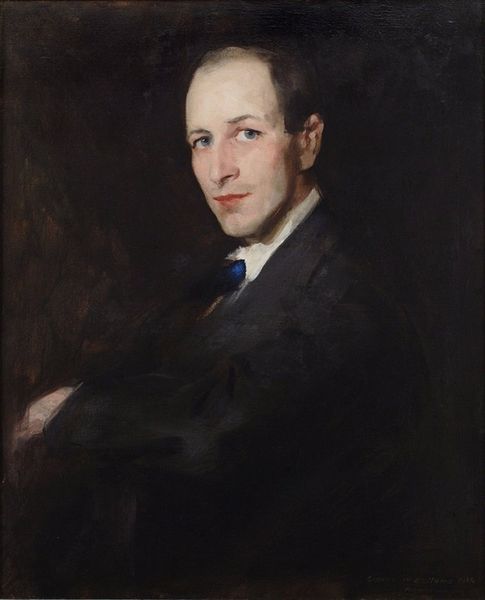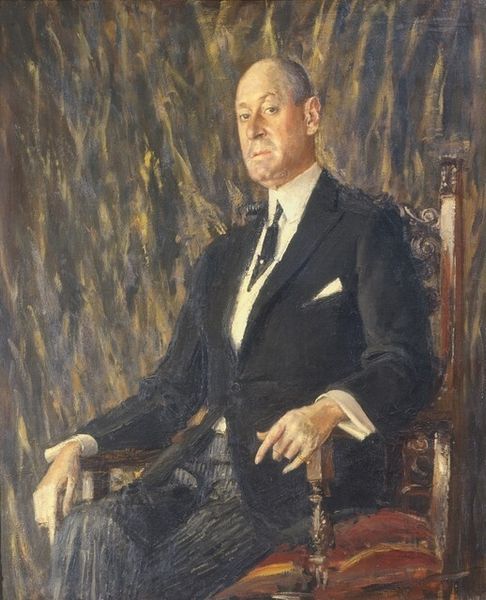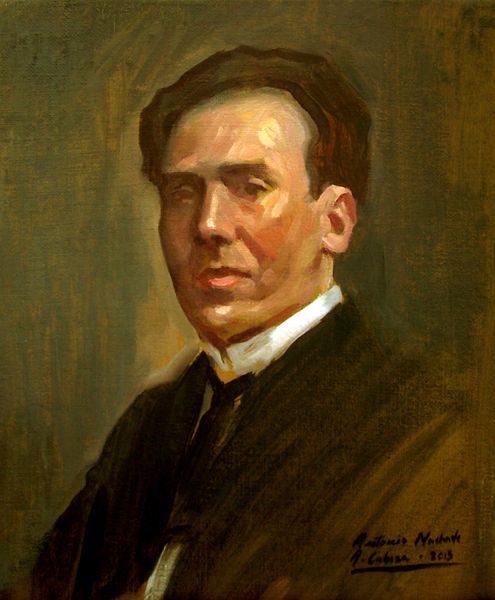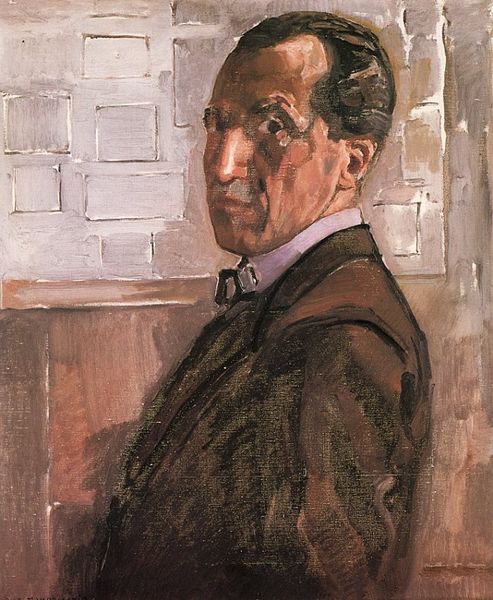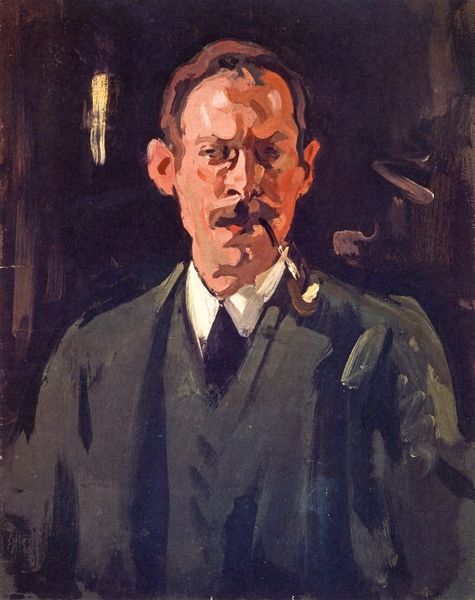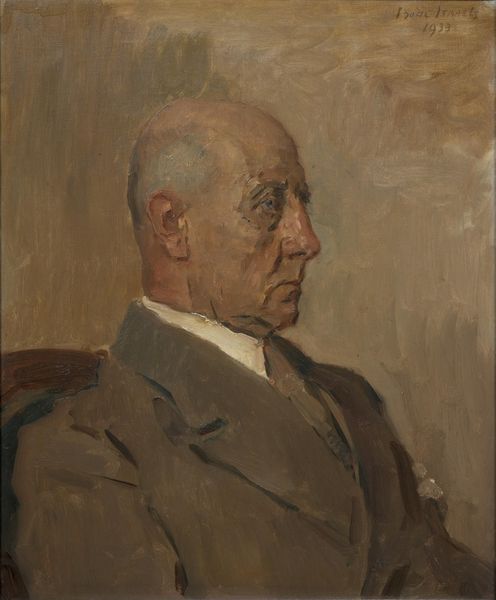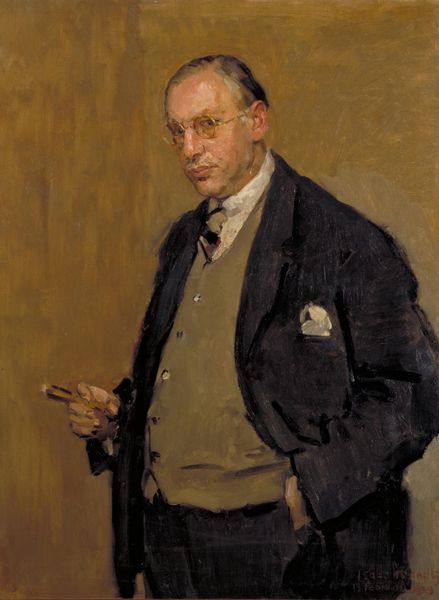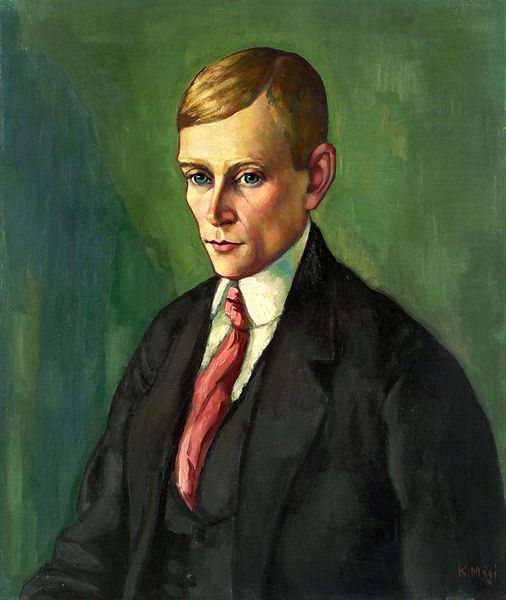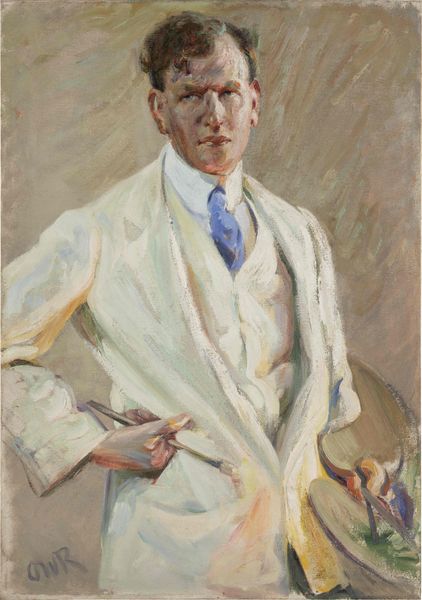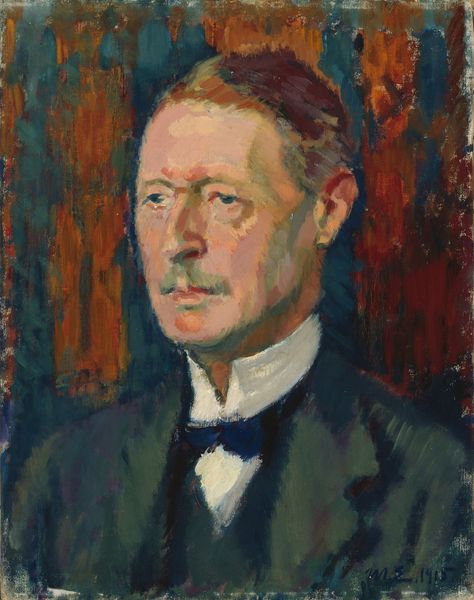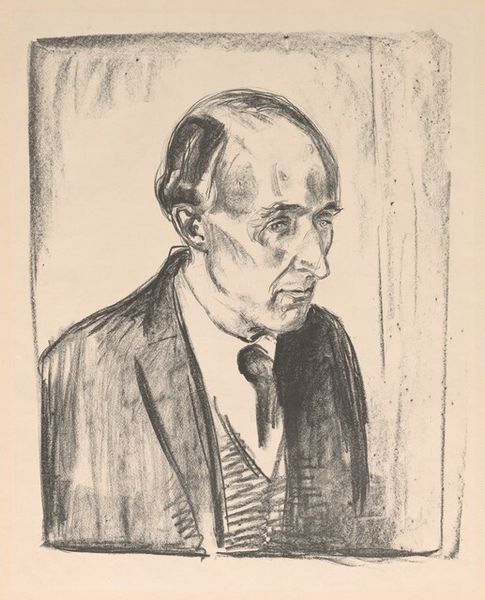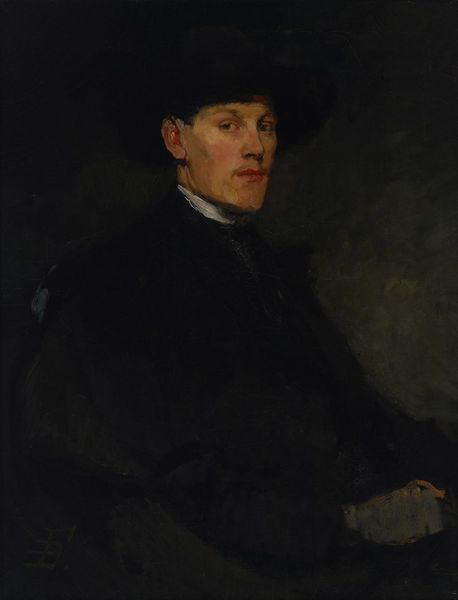
Dimensions: support: 965 x 781 mm
Copyright: CC-BY-NC-ND 4.0 DEED, Photo: Tate
Editor: This is Max Liebermann's portrait of "Professor Richard Cassirer," currently housed at the Tate. The muted palette evokes a rather somber mood. What do you observe about the brushstrokes and composition? Curator: The painting exemplifies a sophisticated application of impasto. Notice how Liebermann utilizes short, broken strokes to construct form and capture light, particularly on Cassirer's face and hands. The subtle variations in tone and texture create a dynamic surface. Editor: So, the expressiveness isn't just in the subject, but in the paint itself? Curator: Precisely. Liebermann prioritizes the visual qualities of the medium, allowing the paint itself to convey a sense of vitality and immediacy. The composition reinforces this through its focus on the interplay of light and shadow. Editor: I see. Thanks, that helps clarify Liebermann's technique. Curator: Indeed, examining the formal elements allows us to appreciate the artist's mastery of visual language.
Comments
tate 8 months ago
⋮
http://www.tate.org.uk/art/artworks/liebermann-professor-richard-cassirer-t00632
Join the conversation
Join millions of artists and users on Artera today and experience the ultimate creative platform.
tate 8 months ago
⋮
Liebermann painted numerous portraits throughout his life, including many of friends and acquaintances living in Berlin. Professor Richard Cassirer was born in 1868 in Breslau and was Professor of Neurology at Berlin University between 1912 and 1925, the year of his death. His brother Paul Cassirer, a prominent art dealer, commissioned this portrait on the occasion of Richard Cassirer's fiftieth birthday. Cassirer sat for the portrait in Liebermann's studio, which was in the attic of his Berlin house right next to the Brandenburg Gate. It was shown during the summer of 1918 at the Free Secession exhibition. Gallery label, August 2004
